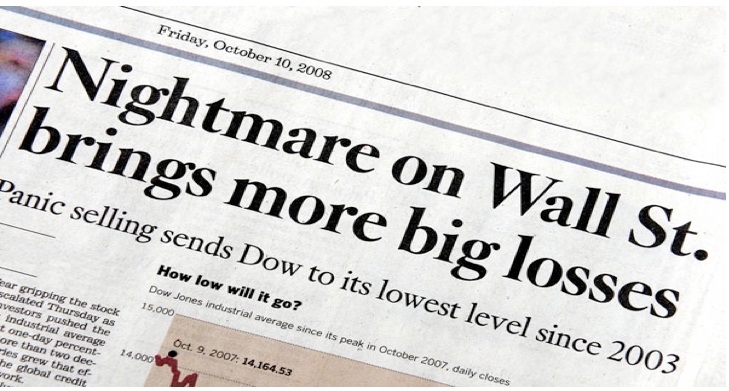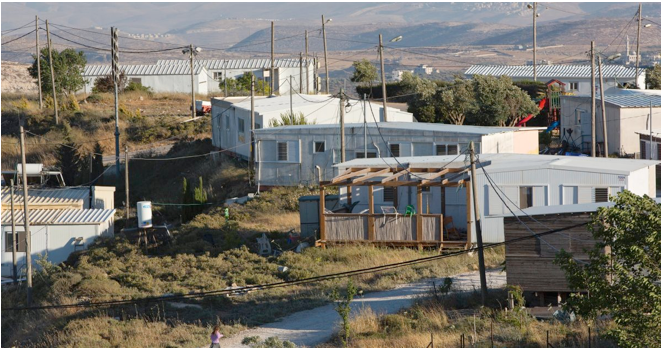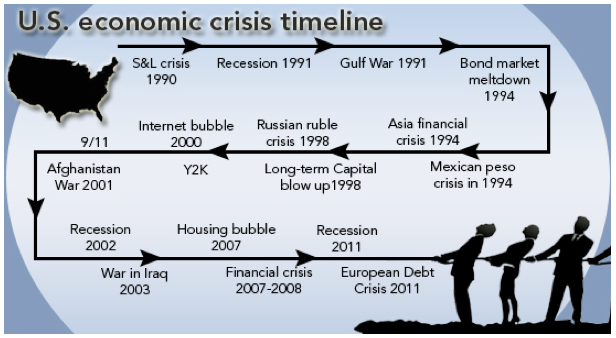NEW GEOGRAPHY--One obvious, if little discussed, reason the progressive wave receded last week: The left’s increasingly unappealing economic agenda. In the past, progressives focused on improving conditions for working and middle class Americans through economic growth, home ownership and expansive infrastructure projects.
Today, notes former Bill Clinton aide William Galston, progressives rarely promote economic growth, having developed a particular hostility to many of the industries—energy manufacturing, transportation and agriculture—that offer economic opportunity to millions of Americans. This new environmental orientation has been less than enthusiastically embraced away from the coasts, where Trump, not coincidentally, triumphed.
In contrast to the old Democratic notions embraced by the likes of Harry Truman or the late California Governor Pat Brown, today’s progressives promote social control and the consolidation of a cognitively determined world order. Its promise amounts to forging a kind of high-tech middle ages in which the new aristocracy—techies, media grandees, financial moguls, academics, high-level bureaucrats—dominate while the middle class becomes increasingly serf-like.
In this new neo-feudalism, property ownership, like power, is concentrated in ever fewer hands.
Trumpism as anti-feudalism
The Trump victory tapped into a class rebellion among middle- and working-class voters who feelthe most alienated and pessimistic about the future. The post-industrial, asset-inflated world so beneficial to the Apples, Googles, media stars and the trustifarians in glamour cities has been less kind to the middle and working class, whose incomes have dropped or stagnated over the past decade and a half.
While some percentage of Trump’s supporters were fundamentally “deplorable,” this wasn’t the KKK triumph imagined by scriptwriter Adam Sorkin. Rather, he won with the support of many people who had previously voted for Barack Obama.
White working class voters, endless mocked and sometimes even demonized in the media, were massively underestimated by the pollsters, as well — who used 2012 exit polls that undercounted as many as 10 million white voters over 45 to build their models for who would turn out in 2016.
And Trump dominated those voters, winning them by 40 percentage points — a 15 point improvement over Mitt Romney’s margin. Trump’s opponent, it should be noted, was also white.
How feudalism could trump populism.
It remains to be seen how Trump’s voters will feel about their choice in the years to come, but the basic incoherence of his world-view, along with the corporatist leaning of the Republican majority in Congress, could undermine any attempt to restore upward mobility
There are fundamentally three forces driving our post-modern feudalization, all of them related. One is globalization, highlighted throughout the campaign, and clearly responsible for considerable job losses for certain classes and certain regions. As countries such as China and India move up the value-added chain, even higher-paid workers will face mounting economic competition. San Jose and Raleigh soon could feel some of the pain that Youngstown and Flint have absorbed for decades.
The second is immigration which, for all its many blessings, tends to depress wages for lower and middle workers. Many native-born Americans who used to enjoy steady work have joined the rapidly expanding, and economically vulnerable, precariat made up of contingent, irregularly employed workers. Both Bernie Sanders and Trump identified the problems faced by such workers by unrestricted immigration.
Undereducated whites are not the only ones who are suffering from downward mobility. Trump trailed but still considerably outperformed previous GOP nominees among both Latinos and African Americans. Increasingly, educated workers are threatened by such things as -IB visas for skilled workers, which essentially replaces indigenous skilled workers with imported indentured servants. This has already resulted in job losses among IT workers at places like the Disney Company and Southern California Edison.
The third driver of feudalization lies in the concentration of business and property ownership. Lenin once identified “small scale production” as what “gives birth spontaneously to capitalism and the bourgeoisie.” America’s small firms are in retreat while large corporations increasingly dominate everything from food to technology. For the first time in our modern history, exits from business now exceed new incorporations.
Similarly, home ownership has dropped to its lowest level in five decades, with the decline steepestamong young people. More millennials now live with their parents than with a partner. And when they do move out, they are often trapped into renting, often at high rates, with little chance of ever buying a house.
The Religious Slant of Ecotopia
The first feudal era was characterized by constrained class mobility, a decline of middle orders and a persistent concentration of power, first in feudal lords and later kings. But what held Medieval society together was an attachment to common articles of faith. Catholic dogma defined and justified the ascension of the aristocracy and royalty, and explained in theological terms both why the poor should accept their fate, and why middle-class aspirations were a threat to the moral order.
Today religion is in, pardon the pun, secular decline. Particularly in the bluest states, it has been replaced by two new faiths. One is the green religion, now focused on climate change. The other new faith is technological determinism, the idea that there is a magical, disruptive solution to any problem, including those relating to nature.
Nowhere are these two religions more commingled than in America’s Ecotopia, which extends from Northern California to the Pacific Northwest and is both the home to our leading tech companies and birthplace of modern environmentalism.
Structural changes help explain this melding. Today Silicon Valley profits have become more centered on software and media than hardware, so the constraints associated with environmental regulations, such as high energy and water costs, have become less important to oligarchs. At the same time many Silicon Valley companies — notably Tesla/Solar City — have sought to profit from the shift to “green” energy, feeding on the beneficent federal subsidies attached to it.
For these interests, the GOP’s great sweep represents a bit of an unexpected setback. The federal subsidies driving some of these industries are likely to be scaled back. Used to a cozy relationship with the White House, the tech elite, with the notable exception of Peter Thiel, finds itself on the outside looking in.
Acolytes of the technocratic green ideology, hostile to Trump, geographically and ideologically removed from the rest of the nation and already functioning as a kind of wealthy, cossetted alt-nation, are now talking vaguely about succession. That conversation is driven in part by apocalyptic predictions about climate change generally accepted without skepticism in media, academic and political circles.
Although couched in scientism, green politics should be seen as somewhat faith-based, a craving more about piety than practical reality. Both Bjorn Lomborg and NASA’s Richard Hansen, one of the earliest heralds of climate change, doubt that the measures embraced by the Paris accords will prove remotely effective in reducing temperature rise. California , a recent report demonstrates. could literally fall into the ocean with no appreciable impact on global temperature, particularly given that countries like China continue to boost their coal capacity.
Neo-feudalism and the fate of the middle class.
Most critically, the theology of green progressives will do as little good for today’s middle and working class people as extreme Catholic dogma did for the medieval peasantry. Overall, according to a recent Social Science Council report, California is now the most unequal state when it comes to “well being,” combining stupendous, mostly coastal wealth with the highest rate of poverty in the nation, concentrated inland.
Neo-feudalism diminishes the property owning middle-class. In the Bay Area, regional governments are now seeking to limit all new development to a mere fraction of the area’s land mass, all but guaranteeing the future generations will face almost impossibly high housing prices. And a new set of state regulations, including a requirement that new houses have “zero” net energy use all but guarantees that houses, over time, will continue becoming ever more expensive.
The Bay Area’s regional plan also says goodbye to the American dream, suggesting that 82 percent of all new housing should be rental. Ultimately there will be little left for “little people” save for low end service jobs and benefit-less roles in the gig economy created by the oligarchs . Tech firms in the Valley employ shockingly few Latinos or African Americans, who make up barely 6 percent, for example, of Facebook’s workforce. And that’s better than the average of barely 5 percent among the leading tech firms.
Older industries do far better on these terms. In manufacturing, 16.2% of workers are Latinos and 9.7% are African America, according to 2015 data. In mining, quarrying and oil and gas extraction, Latinos make up 16.9% of the workforce and African-Americans 4.8%, while in agriculture, forestry, fishing and hunting, nearly a quarter of the workforce—23%—is Latino and 2.7 percent is African-American.
As the green ideology undermines the last bastions of the middle and working class economy, some of the most extreme “ethnic cleansing” is taking place in such cities as San Francisco, Portland and Seattle, where high prices, regulations , sometimes aided local redevelopment, have worked to push minorities to the poorer suburbs, or out of the region entirely.
Oligarchs and Alms for the Poor
Silicon Valley’s answer to this to this reality is hardly reassuring. At a conference on environmental economics several years back, I discussed with a prominent Silicon Valley venture capitalist the impact of these policies on homeownership and family formation. A low birthrate didn’t faze him because he believed “we really don’t need people now,” at least not those without special skills. Ultimately robots will do most of the basic work, he explained.
Of course, if the largely childless hipsters on of San Francisco may accede to this view, it’s unlikely that many others, including the poor and undocumented immigrants, will embrace the post-human perspective at the heart of Silicon Valley. Of course the oligarchs have a solution to the marginalization of the masses: a pool of subsidies to help cover artificially inflated housing and energy costs. Elon Musk and other valley heavyweightssupport a government-sponsored minimum income for what they regard as an increasingly redundant population.
The oligarchs do not want risk a rebellion from below; the Trump victory demonstrates that potential. Yet don’t worry much about their being burdened by their call for societal generosity. Skilled at tax avoidance, they’ll pass the bill on to the remaining middle and working class residents, while the regulatory clerisy, both in government and the universities, enjoy pensions and other protections unavailable to the masses.
Trump and the New Feudalism
For all the awfulness associated with Trump, his election stemmed from a disinclination among Americans to accept their place in the new technocratic order. Trump is best praised for some of the enemies he has made—movie stars and hierarchs of the environmental left, the racial grievance industry, the high-tech oligarchs, the bureaucracy and a university system that serves largely as a giant re-education camp. Not surprisingly, those enemies are having a collective fit about his victory.
Yet for all the pleasure one can derive from this spectacle, it’s dubious that Trump, himself the licker off a silver spoon, will be effective at slowing America’s slide towards neo-feudalism. After all, his basic policy instincts tend to be wrong: cutting taxes on the rich is not what the middle and working classes need. And banning illegal immigration and engaging in trade wars may help some industries, but will certainly hurt others. By themselves, there’s no chance that those steps will restore prosperity to so many Americans.
But Trump’s working-class-fueled victory should finally convince the operatives in both parties that restoring upward mobility constitutes our great political challenge. There could be some common ground in policies that embrace things like expanding skills education and economically useful infrastructure, relaxing federal regulation and reducing taxation of small enterprise.
What Trump deserves credit for—perhaps the only thing he deserves credit for—is derailing the predictable transition of the same old insiders who would feed at the trough in a Clinton Inc. administration. Now it’s up to the rest of us—those who supported him and those, like me, who did not—to determine that making America “great again” also means standing up to the new feudalism, and chasing this regressive order back into the darkness of the past, where it belongs.
(Joel Kotkin is executive editor of NewGeography.com. … where this piece was most recently posted. He is the Roger Hobbs Distinguished Fellow in Urban Studies at Chapman University and executive director of the Houston-based Center for Opportunity Urbanism. His newest book, The Human City: Urbanism for the rest of us, will be published in April by Agate. This piece first appeared at The Daily Beast and was published most recently by New Geography.)
-cw







 The Times correctly notes that “the bill deepens the occupation thereby threatening the viability of the two-state solution, which admittedly is nearly moribund but which remains the only realistic hope for peace.”
The Times correctly notes that “the bill deepens the occupation thereby threatening the viability of the two-state solution, which admittedly is nearly moribund but which remains the only realistic hope for peace.”














 Plus, the U.S. is actively involved in two wars, Iraq and Afghanistan, which are now approaching 15 years, with little chance of ending in the foreseeable future, regardless of who is elected President. Their total cost is so far estimated to
Plus, the U.S. is actively involved in two wars, Iraq and Afghanistan, which are now approaching 15 years, with little chance of ending in the foreseeable future, regardless of who is elected President. Their total cost is so far estimated to  In applying the above history to the Presidential election, the following implications should be carefully considered:
In applying the above history to the Presidential election, the following implications should be carefully considered: 













